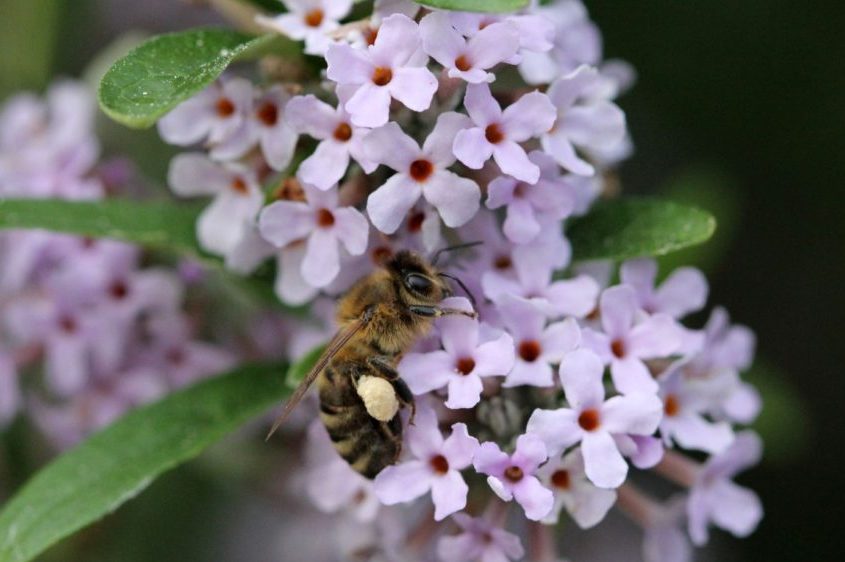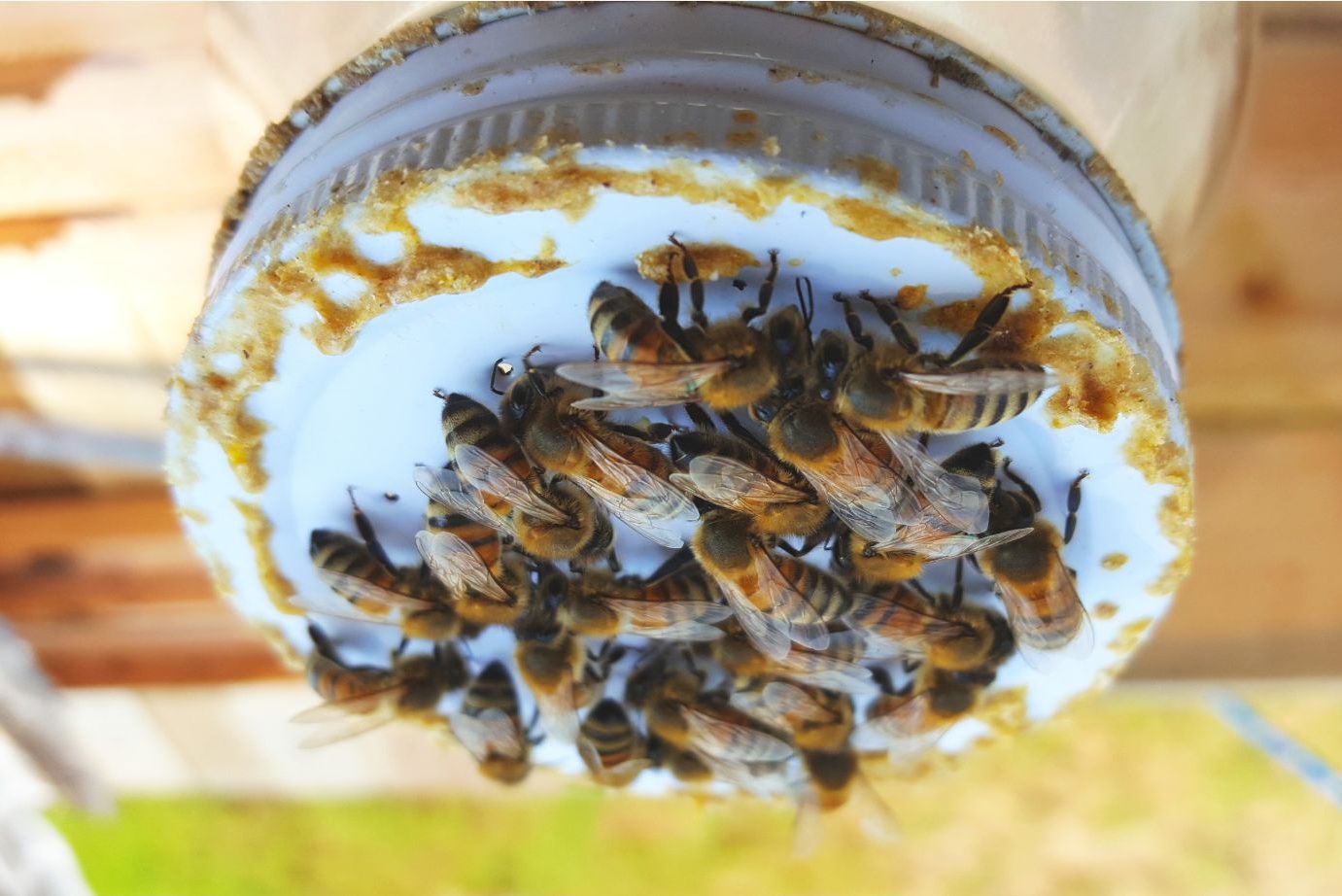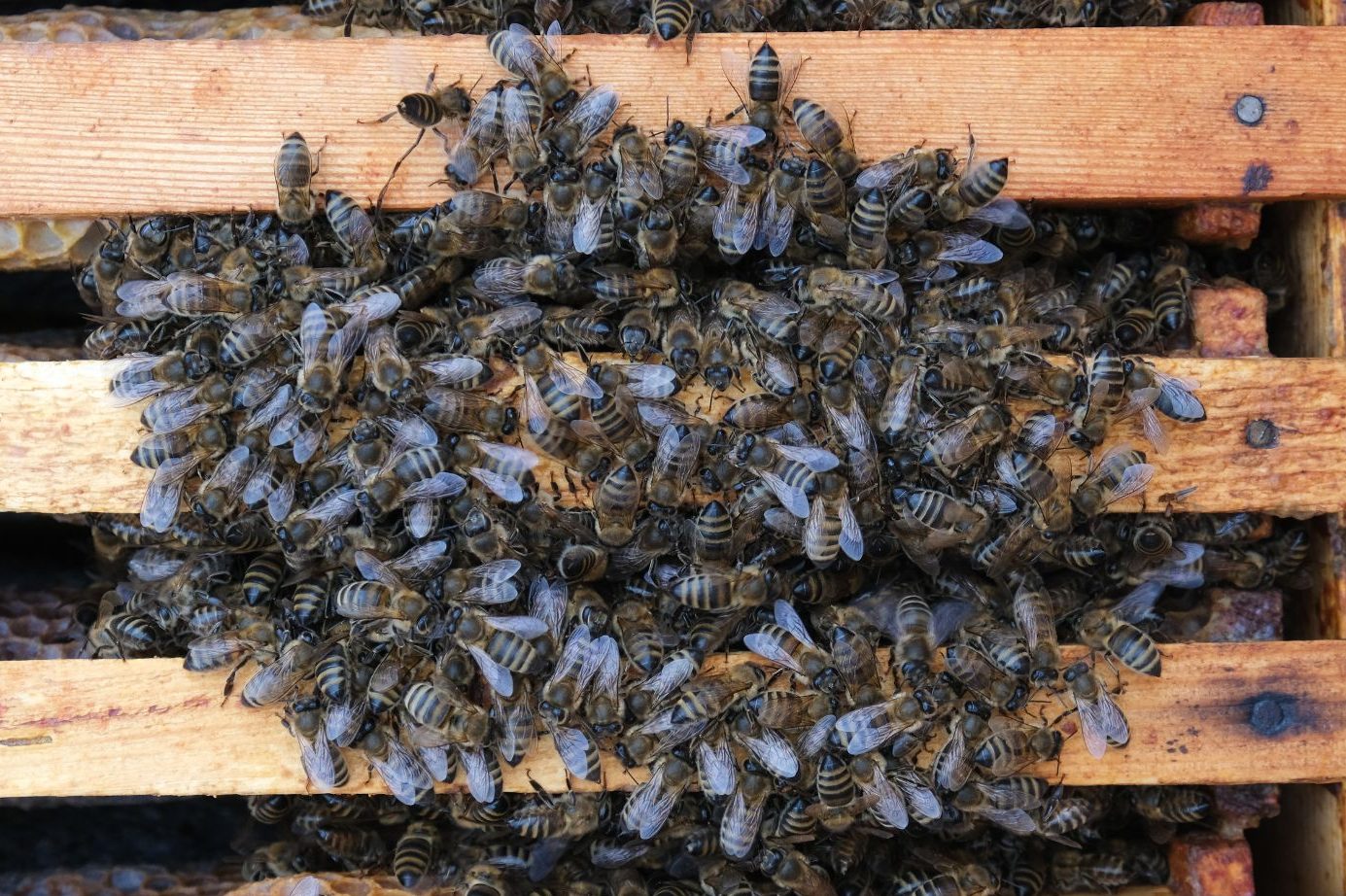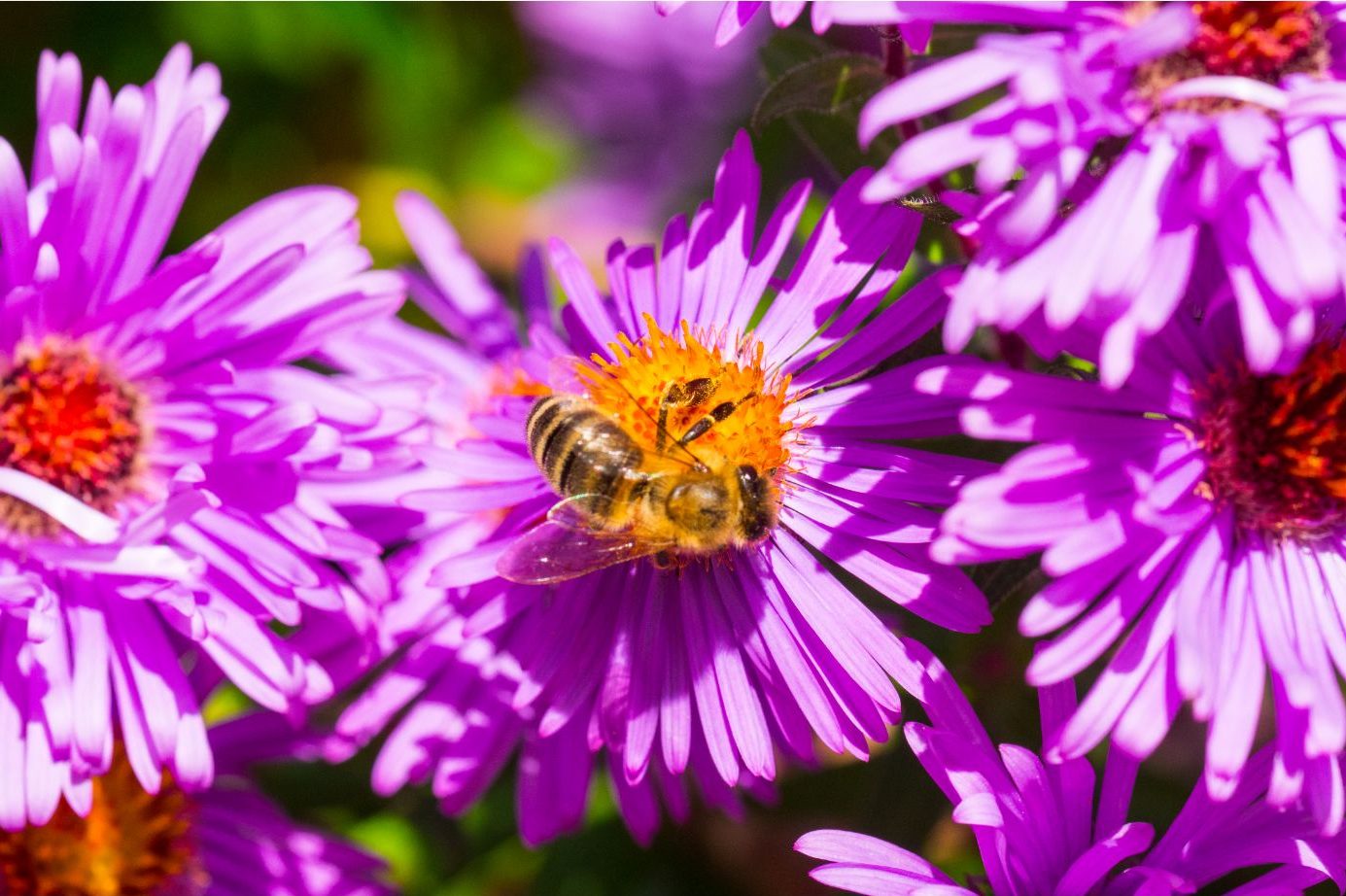by Kim Butz, CFSA Local Food Program Director | Wednesday, Sept. 7, 2022 –
Honey bee forages with full pollen baskets.
One of the things I hear from producers I work with is a consistent concern about the challenges of successfully overwintering hives. While honey bee husbandry isn’t part of my duties at CFSA, I love bees and enjoy observing them on farms and in my gardens.
Beekeepers do everything they can to set their bees up for a successful winter season, including supplemental feeding and more complicated strategies like combining weaker hives to increase the number of bees in a single hive.
What Are Fat Bees?
I’ve been taking my coffee out in the mornings lately to watch the bees do their bee things and wondered if it was just my imagination or if the bees were looking chunkier.
This made me wonder how fall bees can make it through winter when there are few sources of forage for them. This question produced some exciting research. It turns out the change of seasons brings about so-called fat bees!
While some species will visibly look larger, in honey bees, it is less about the size of the bee and more about the internal structural changes for the cold season ahead. Like bears gearing up for hibernation, native bees and honey bees practice a similar strategy of packing on the milligrams.
“Like bears gearing up for hibernation, native bees and honey bees practice a similar strategy of packing on the milligrams.”
Protein is critical to bee nutrition. Pollen is the natural protein source for the honey bee, and a wide variety of protein from different plant sources is necessary for a colony’s success. A healthy combination of proteins is critical for honey bees, who need all 10 essential amino acids that different proteins offer to raise their brood to adulthood.
Honey bees face many challenges throughout spring and summer, and winter takes those challenges to the next level. When we talk about “fat bees,” it’s vitellogenin that they need to be able to help store their food reserves.
Honey bees on a sugar-water feeder.
A Closer Look at Bee Nutrition
Vitellogenin is a type of protein that honey bees use to store food reserves in their bodies. Vitellogenin consists of sugar, fat, and protein, with the main component, protein, totaling 91% of the mix. Numerous studies have shown that vitellogenin is necessary for honey bee immune function.
Fascinatingly, vitellogenin is essentially an egg yolk-type protein, synthesized in the abdomen of many types of animals, not just honey bees. In bees, it acts as an antioxidant to promote longevity in queen bees, and boost the immune systems of the whole hive.
The workers, who are sterile female honey bees, don’t need to lay eggs, so they have no use for this in yolk development. Instead, they deposit it into their bodies and use it as a food storage reservoir to create royal jelly. They use these protein stores as a hormone for future foraging behaviors and as an immune system component for their own “fountain of youth.” A bee fountain of youth? Yes, it seems so.
Research has shown that vitellogenin hunts down free radicals in the bee’s system, suppresses oxidative stress damage, and enables bees that overwinter to live longer. These benefits have been observed in honey bees and in wild bees.
“Protein is precious to the honey bee colony, and vitellogenin levels are necessary for immune function.”
The body fat of all bees function as the center of their metabolisms, combining lipids, carbs, amino acids, proteins, and many other metabolites, which they then distribute within the colony. This nutrient transfer within the hive is significant to understand. The distribution has to meet the different requirements of the queen, larvae, nurse bees, foragers, and drones, and it needs to be shared optimally.
I didn’t realize that nurse bees, in addition to feeding the brood, constantly provide the forager’s protein. Bees on forager duty know what to collect based on brood pheromones, nectar and pollen stores, and the amount of royal jelly available in the hive.
The quality of the jelly is essential and dependent on vitellogenin levels.
What happens when there are long stretches of rainy days? Pollen levels diminish because it’s too wet for forager bees to go out and collect. When pollen stores are low, nurse bees must tap into the vitellogenin reserves within the hive in order to feed growing brood.
In short, low protein levels have a domino effect where the young larvae are starved, or if needed, eaten to recycle the protein back into jelly to sustain the hives existing residents.
Honey bees cluster in winter to keep warm.
Overwintering Dynamics
Honey bee survival during long, cold winters depends on ample honey and protein stored within the hive. Workers tank up on pollen when brood rearing winds down for the season. With fewer in the brood to feed, the adults store the excess nutrients in their bodies and become stuffed full of vitellogenin. Fat bees are well nourished and ready for winter.
Studies have shown that European bees have a “higher set-point concentration for vitellogenin than their African origin.” This increased capacity is how regular worker bees evolve into winter bees. They hunker down and live off that excess for the duration.
Supplemental feeding by beekeepers encouraging well-fed bees can be the key to colony health through nutrition, successful wintering, spring build-up, and honey production. Fat bees and a large-sized colony want to rear brood, build protein reserves, forage, and swarm to expand.
High-vitellogenin titers enable the nurse bees, queens, and winter bees to live longer, under less stress, and be more resistant to disease. Protein is precious to the honey bee colony, and vitellogenin levels are necessary for immune function.
As a beekeeper, keep a good eye on colony health and provide quality pollen for supplemental feedings seems to be one more tool to utilize in maintaining a thriving colony of nourished, fat bees that are set up to survive the winter! What I may have mistaken before as some fat, happy bees on my Mexican petunias I now know are bees feverishly preparing for their leanest season: winter.
How You Can Help Bees Overwinter
Whether you are a beekeeper or just a bee observer like me, there are some simple things you can do to help our bee friends make it through winter.
If you’re a grower of any scale, the most helpful thing to do is plant late-season forage plants. Ensure there are native plants in bloom in late summer and early fall to provide quality nectar and pollen sources for bees, honey and wild, to bulk up for winter.
Aster is an excellent late-season forage plant.
If you’re a beekeeper, consider:
- Don’t collect too much honey in the summer. Environmental factors like early frosts and excessive rain may give bees foraging challenges in the fall. Having extra frames of honey can give them some added winter reserves.
- Plan on supplemental feeding if it seems like the hives aren’t heavy enough come fall.
Lastly, as you sip your coffee, smell the roses, and watch bees bustling about, remember that late summer is a time of abundance and holds the promise of more challenging times to come.






